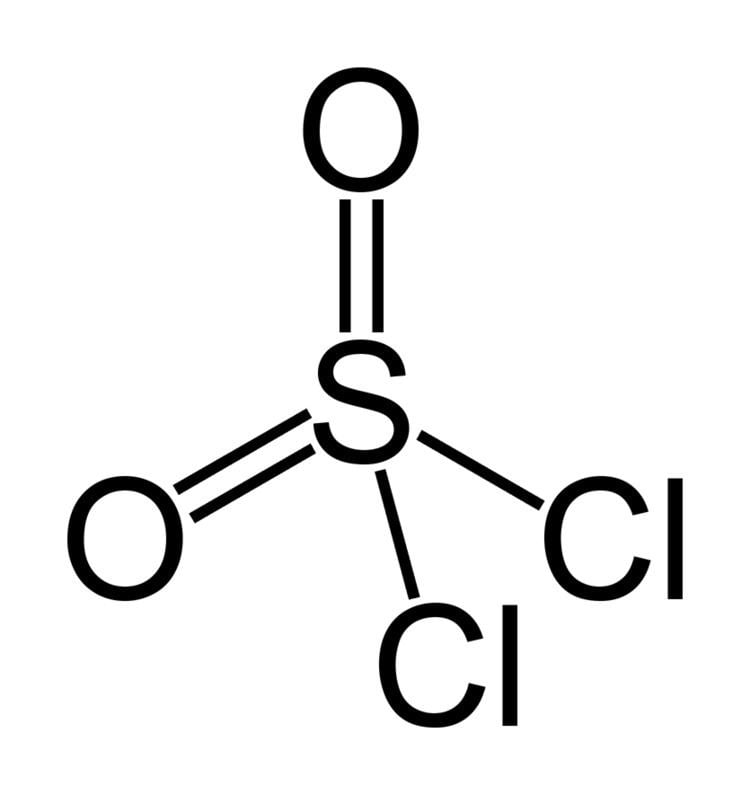Related sulfuryl halides Molar mass 134.965 g/mol Boiling point 69.4 °C | Formula SO2Cl2 Density 1.67 g/cm³ Pubchem 24648 | |
 | ||
Related compounds Appearance Colorless liquid with a pungent odor. Yellows upon standing | ||
Sulfuryl chloride is an inorganic compound with the formula SO2Cl2. At room temperature, it is a colorless liquid with a pungent odor. Sulfuryl chloride is not found in nature, as can be inferred from its rapid hydrolysis.
Contents
Sulfuryl chloride is commonly confused with thionyl chloride, SOCl2. The properties of these two sulfur oxychlorides are quite different: sulfuryl chloride is a source of chlorine whereas thionyl chloride is a source of chloride ions. An alternative IUPAC name is sulfuroyl dichloride.
Structure
Sulfur is tetrahedral in SO2Cl2, being bound to two oxygen atoms via polarized double bonds (whichorbitals) and to two chlorine atoms via polarized single bonds. The oxidation state of the sulfur atom is +6, as in H2SO4.
Synthesis
SO2Cl2 is prepared by the reaction of sulfur dioxide and chlorine in the presence of a catalyst, such as activated carbon.
SO2 + Cl2 → SO2Cl2The crude product can be purified by fractional distillation. It is uncommon to prepare SO2Cl2 in the laboratory because it is commercially available. Sulfuryl chloride can also be considered a derivative of sulfuric acid.
Sulfuryl chloride was first prepared in 1838 by the French chemist Henri Victor Regnault.
Reactions
Sulfuryl chloride reacts with water, releasing hydrogen chloride gas and sulfuric acid:
2 H2O + SO2Cl2 → 2 HCl + H2SO4SO2Cl2 will also decompose when heated to or above 100 °C, about 30 °C above its boiling point.
Upon standing, SO2Cl2 decomposes to sulfur dioxide and chlorine, which gives the older samples a slightly yellowish color.
Uses
Sulfuryl chloride is often used as a source of Cl2. Because it is a pourable liquid, it is considered more convenient than Cl2 to measure, store, and dispense. SO2Cl2 is widely used as a reagent in the conversion of C–H → C–Cl adjacent to activating substituents such as carbonyls and sulfoxides. It also chlorinates alkanes, alkenes, alkynes, aromatics, ethers (such as tetrahydrofuran) and epoxides. Such reactions occur under free radical conditions using an initiator such as AIBN. It can also be used to convert thiols or disulfides into their corresponding sulfenyl chlorides, though sulfinyl chlorides result from thiols in some cases. SO2Cl2 can also convert alcohols to alkyl chlorides. In industry, sulfuryl chloride is most used in producing pesticides.
SO2Cl2 can also be used to treat wool to prevent shrinking.
Precautions
SO2Cl2 is toxic, corrosive, and acts as a lachrymator. It can form fuming mixtures with water, as well as donor solvents such as DMSO and DMF.
